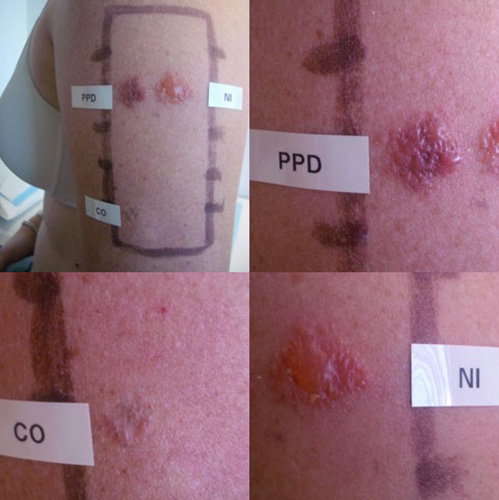‘Usage tests’ and patch testing in contact dermatitis
In primary care, a ‘usage test’ is helpful to test whether a product used by the patient (eg creams, cosmetics) is the cause of contact dermatitis. Advise the patient to apply the substance to the cubital fossa (inside of the elbow) morning and night for up to 7 days, and to report back if the area develops a rash.
Patch testing is used to identify the specific allergen that is causing contact dermatitis. In a multicomponent substance (eg a cream), the allergen may be the active ingredient, preservative, fragrance or base.
Refer to a dermatologist for patch testing:
- to confirm a diagnosis of contact allergy (clinical features do not reliably distinguish between irritant contact dermatitis, allergic contact dermatitis and endogenous dermatitis) and identify the allergen
- when hand or face dermatitis persists or recurs
- when chronic dermatitis that was presumed to be irritant contact dermatitis or endogenous dermatitis (eg venous, atopic) deteriorates or changes (eg in pattern, extent or severity)
- when dermatitis does not respond to previously effective treatment.
See Patch testing for photos of patch testing and skin reactions.

Reproduced with permission from the A-Z of Skin [digital]. Australasian College of Dermatologists. Sydney. https://www.dermcoll.edu.au/

